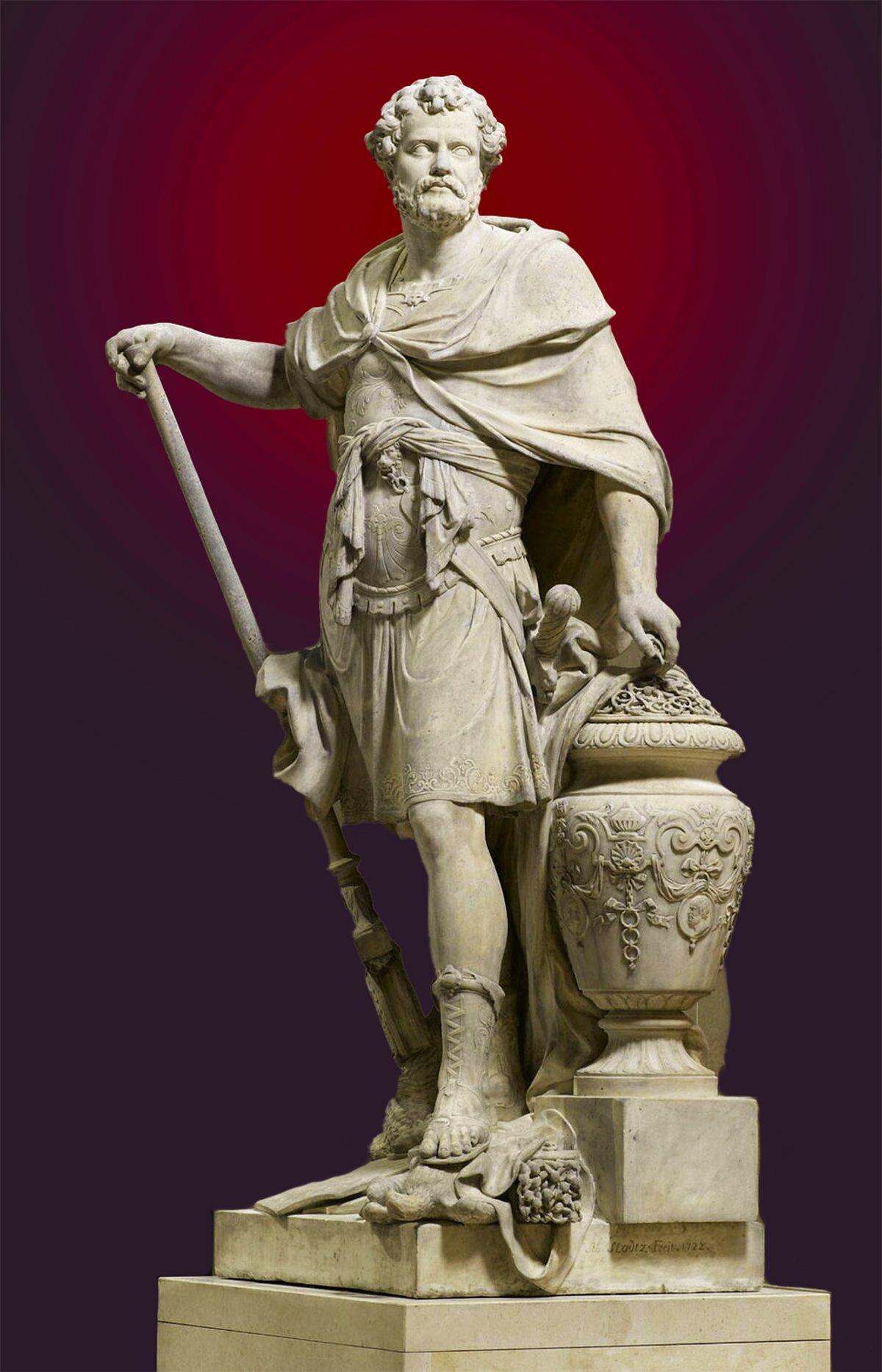Cannae: The Roman Republic’s Bloodiest Battle
The battle that nearly shattered the Roman Republic and made a legend out of Hannibal.
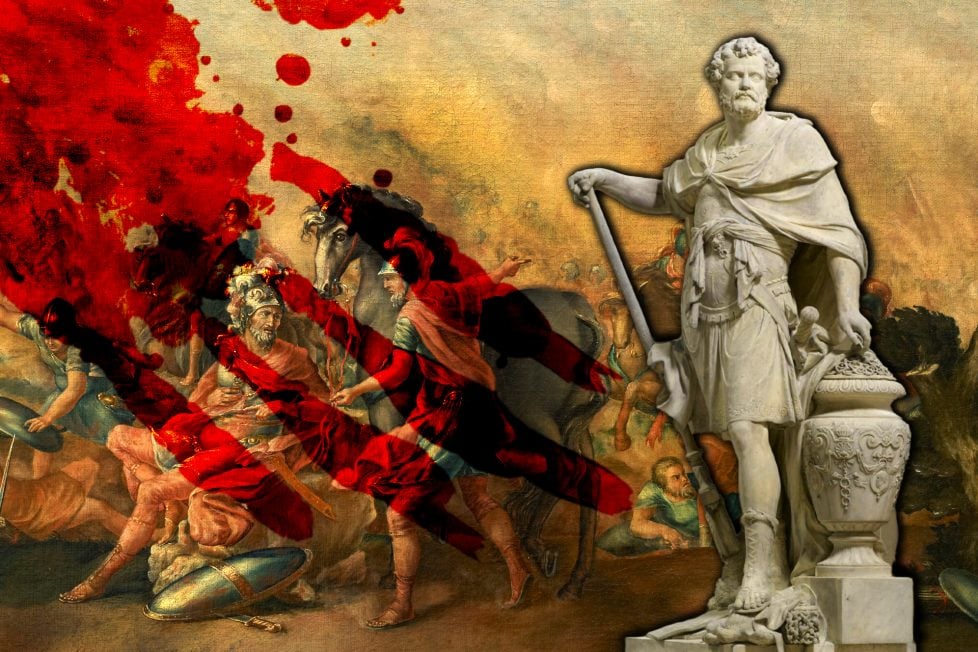
The battle that nearly shattered the Roman Republic and made a legend out of Hannibal.

Table of Contents
ToggleIt was the 537th year since the founding of Rome, or 216 BC according to our calendar. Rome’s war against Carthage had already raged for two years. Hannibal Barca, Carthage’s main military commander, had done the unthinkable. He had traversed the Alps with tens of thousands of men and dozens of war elephants, even as the snow began to set in early winter of 218 BC. For the first time since the Pyrrhic War (280-275 BC), which no living Roman had witnessed, Rome had to fight a defensive war on Italian soil.
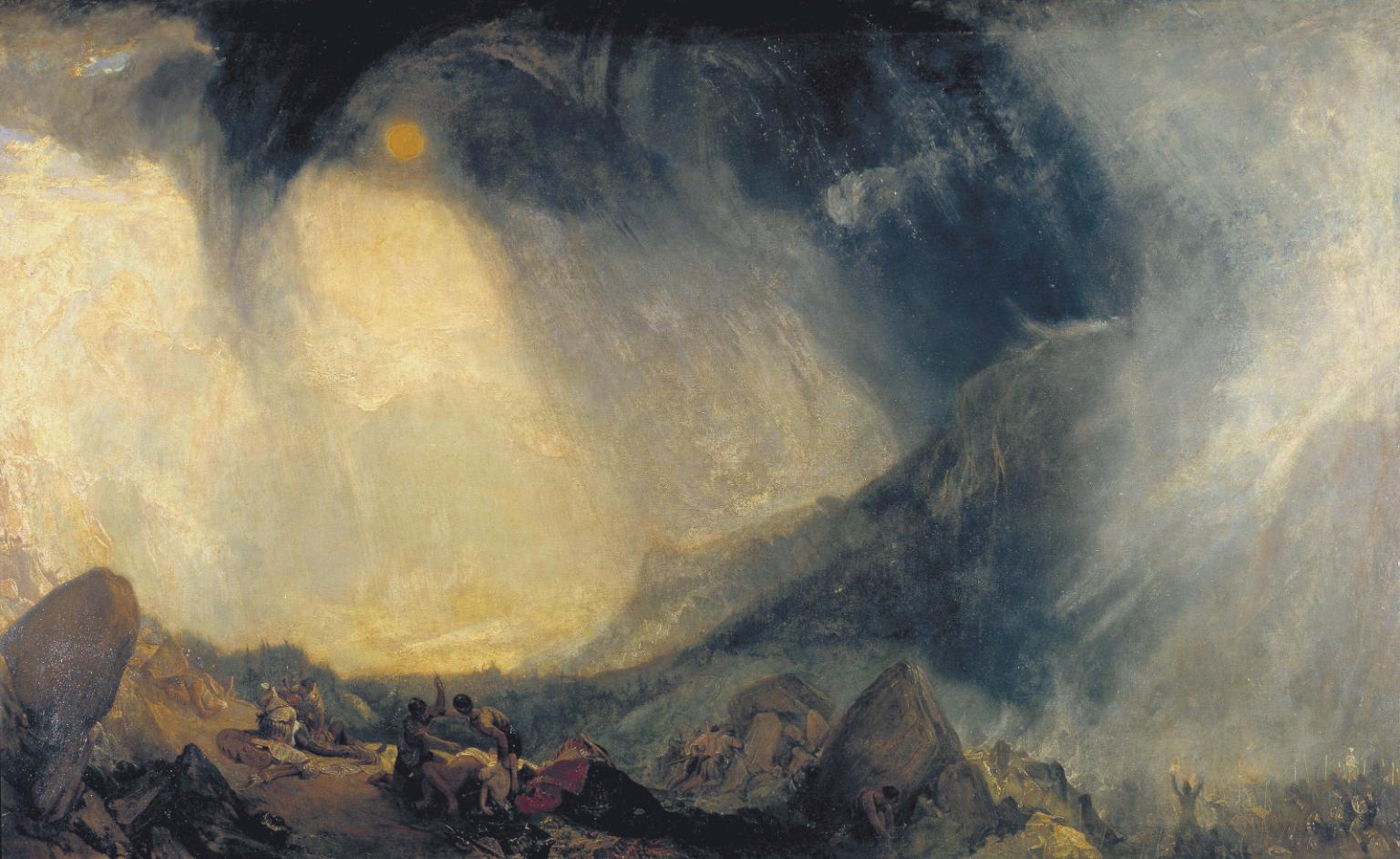
Publius Cornelius Scipio, Roman commander in the field and one of the two consuls for 218 BC, claimed that Hannibal “has lost most of his army and the rest are weak and useless owing to hardship; he has lost most of his horses too, and those he has left he has rendered fit for nothing by the length and difficulty of his march.” However, in the very next battle, Scipio was wounded and narrowly escaped with his life. Battle after battle, the Romans suffered one defeat after another.
By the summer of 216 BC, Rome had had enough. The Republic assembled the largest army in its history. Over 80,000 men had marched with one mission: to completely destroy Hannibal’s army and drive the Carthaginians out of Italy once and for all. Instead, what ensued almost broke the Roman Republic and carved Hannibal’s name into the annals of military history as one of the greatest strategists that ever lived.
In the early 3rd century BC, Rome was a rising power, but by no means the only power in the Mediterranean. Across the sea, on the northern shores of Africa (where present-day Tunisia is located), lay Carthage, a thriving maritime power. The expansionism of these two ancient states eventually led to a war over Sicily. This war lasted for 23 years and is now known as the First Punic War. The term “Punic” is derived from the Latin word “Punicus,” which means “Carthaginian.”
After two and a half decades of bloody warfare, Rome emerged victorious, gaining control over Sicily and Sardinia. Therefore, when hostilities reignited 24 years later, Rome was emboldened by its previous victory over Carthage. The Senate immediately devised a plan to strike at the two main centers of Carthaginian power. In Europe, this was Carthago Nova (modern-day Cartagena in Spain), while in Africa, it was the city of Carthage itself. For this purpose, they raised two armies to be led by the two consuls, who were elected annually to govern the Republic and lead its armies in the field.
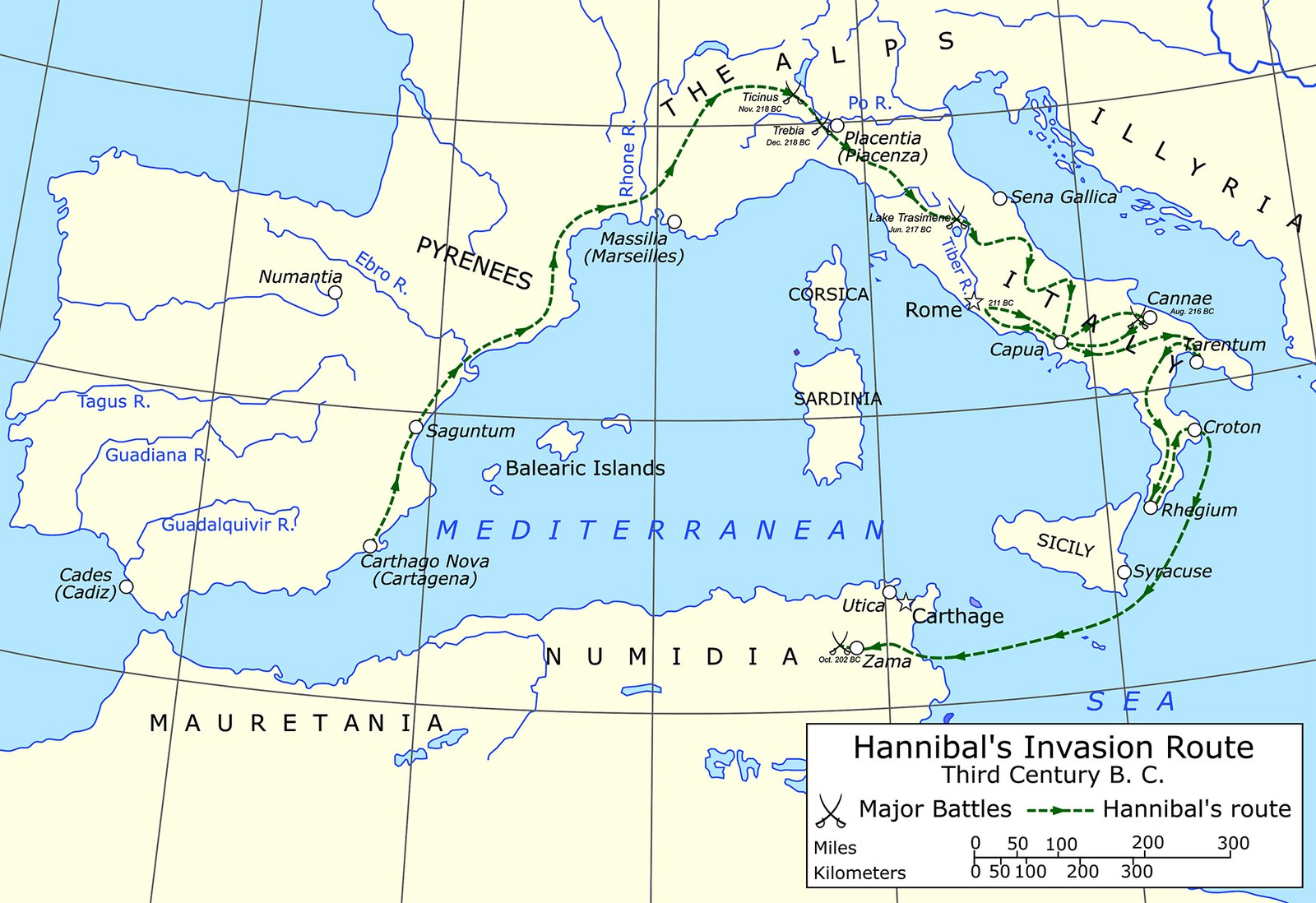
Unbeknownst to the Romans, Carthage had similar plans of its own. Hamilcar Barca, who had seen significant action during the First Punic War, rose to prominence during the subsequent Mercenary War (241–237 BC) and Carthaginian expansion into the Iberian Peninsula. Allegedly, it was he who conceived the plan for a surprise attack into Italy through the Alps, a feat never before achieved by any army. It fell upon Hamilcar’s sons, Hannibal, Hasdrubal, Mago, and (also) Hamilcar, to bring this plan to fruition.
It was actually the Roman army intended for Iberia that first encountered the Carthaginian expeditionary force. Roman consul Publius Cornelius Scipio (also known as Scipio the Elder or Scipio Major) came across a large army led by Hannibal at the Rhone River in Gaul (located in southern France today). Hannibal managed to evade Roman pursuit with more than 50,000 men, 10-20,000 horses, and 37 war elephants, which he led into the Alps. Scipio, assuming that no one in their right mind would purposely lead such a large army into the treacherous mountains at the beginning of winter, concluded that Hannibal and his men had acted out of cowardice.
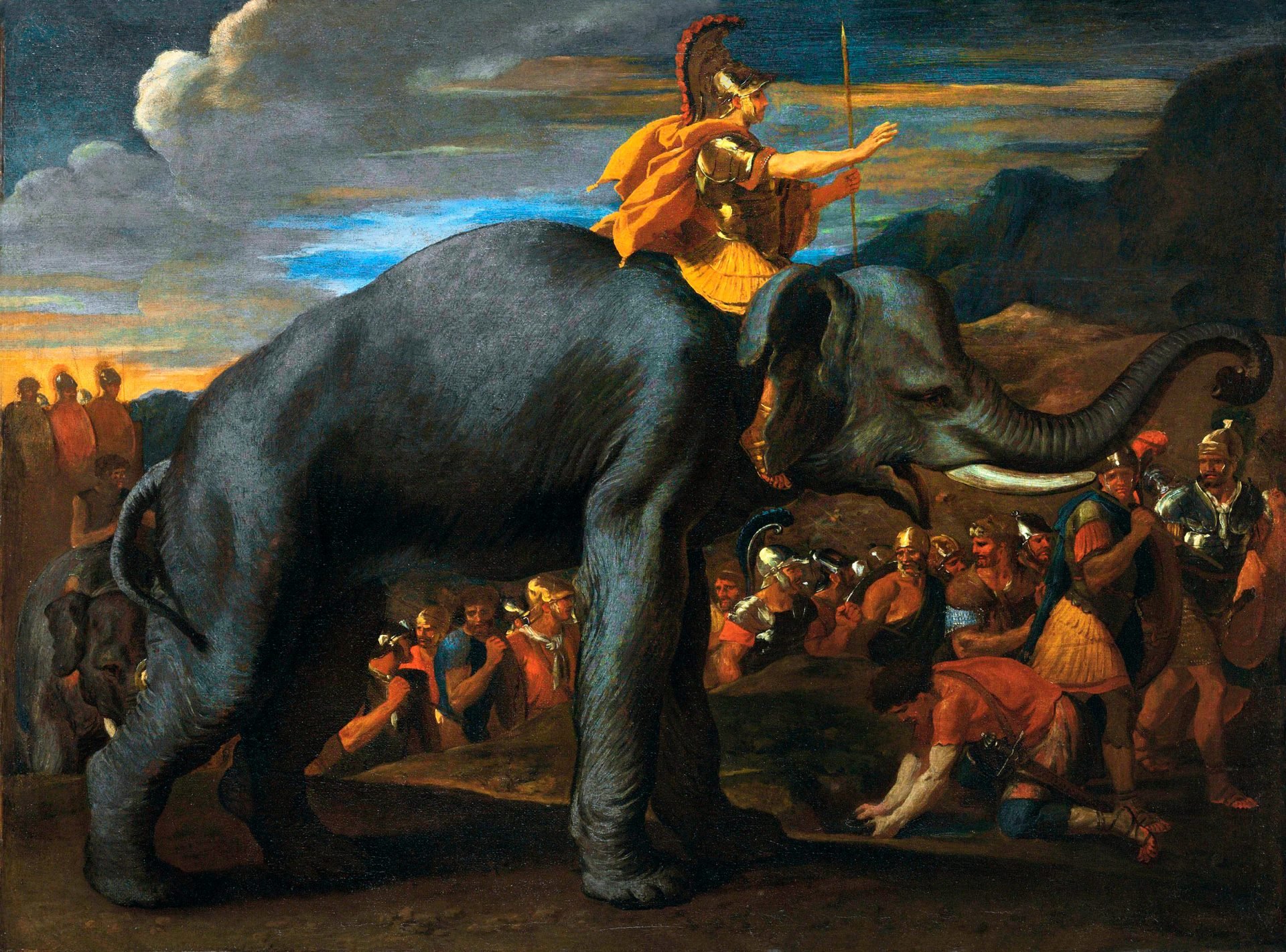
A couple of months later, Scipio the Elder was shocked to discover that a Carthaginian army was already marching on Rome. He had to abandon his army in Iberia and quickly return to Italy to raise a new one. Fortunately for Rome, the army that was meant to attack the Carthaginian center of power in Africa was still in Sicily, so it was hastily recalled.
Hannibal had lost half of his manpower and most of his war elephants in the crossing. We know this from Polybius, who not only interviewed participants but also visited the very exit of the Alps where Hannibal had erected a memorial plaque, stating that his army numbered 26,000 men upon arriving in Italy. His army had suffered some attacks from the local Gauls, but most were lost to the elements and desertion.
Already considering Hannibal a coward and emboldened by the dramatic reduction of his forces, Publius Cornelius Scipio was eager for a battle. In late November 218 BC, Scipio engaged Hannibal on the plains along the eastern bank of the Ticinus River, located to the west of present-day Pavia in northern Italy. According to Polybius, Scipio addressed his troops:
My men, let me tell you what kind of warfare you must expect. It will be against an enemy you defeated in the last war, on land and at sea. An enemy from whom you have exacted tribute for 20 years. An enemy from whom you took Sicily and Sardinia as spoils of war. You therefore will enter upon it with the high heart of victors, they in the despondency of beaten men. Nay more, their readiness to fight at all is due not to courage, but necessity – unless you imagine that an enemy who declined combat when his army was intact has better hopes of success now that he’s lost two thirds of his number in the passages of the Alps!
Perhaps you will answer that though they are few they are nevertheless brave and strong, that they are irresistible fighters. Nonsense! They are ghosts and shadows of men, already half dead, with hunger, cold, dirt and neglect. All their strength has been beaten out of them by the Alpine crags. Cold has dried them up, snowstorms have frozen their sinews, their hands and feet are frostbitten, their horses lame and feeble, and they’ve not a weapon among them which is not damaged or broken. What an army! Why, you’ll not be facing an enemy at all, only the dregs of what once were men. My chief fear is that that we shall have to admit that it was the Alps, and not you, who conquered Hannibal.
The above speech is hardly verbatim, but it had certainly reflected the spirit Scipio felt and tried to convey to his men. In the fighting that ensued Scipio the Elder was wounded and, according to most sources, saved from certain death by his son Scipio the Younger (later known as Scipio Africanus).
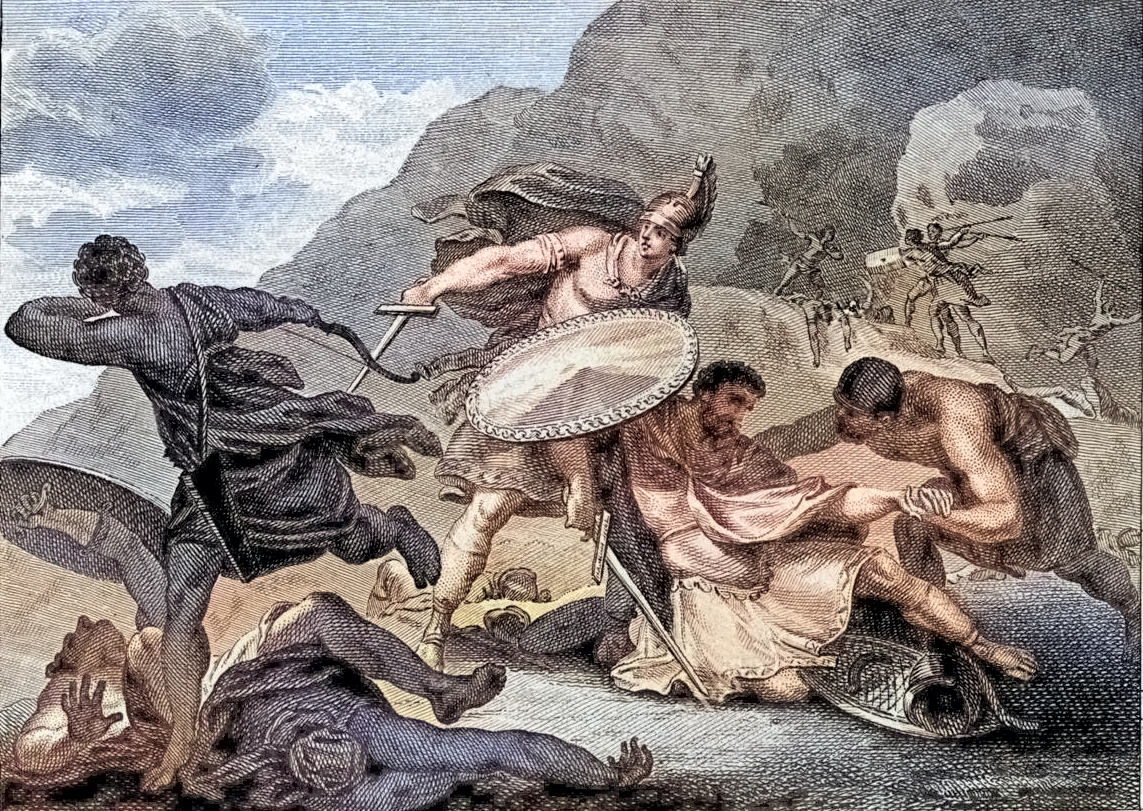
Tiberius Sempronius Longus, the other consul for the year 218 BC, arrived in late December with the army from Sicily. According to Livy, it was against Scipio’s advice that he pursued the Carthaginian forces. Despite both armies numbering around 40,000 men, Longus fell into a trap set by Hannibal’s brother Mago at the banks of the River Trebia. Although Longus managed to escape with his life, over 20,000 Roman soldiers were not so fortunate.
In antiquity, most states would have never recovered from such a crushing defeat, but Rome was not like most states. It immediately assembled a new army, led by Gaius Flaminius, one of the two consuls for the year 217 BC. On June 21, 217 BC, Hannibal’s army managed to catch Flaminius and his forces by surprise, completely obliterating them at Lake Trasimene. Rome lost 25,000 men in the initial battle, including the consul leading them. To make matters worse for the Republic, another army led by Gnaeus Geminus had been marching west, intending to reinforce Flaminius. Unaware of the catastrophe that had taken place at the lake, 4,000 cavalrymen were caught by surprise and either killed or captured. Geminus, at least, managed to evacuate the infantry to fight another day.
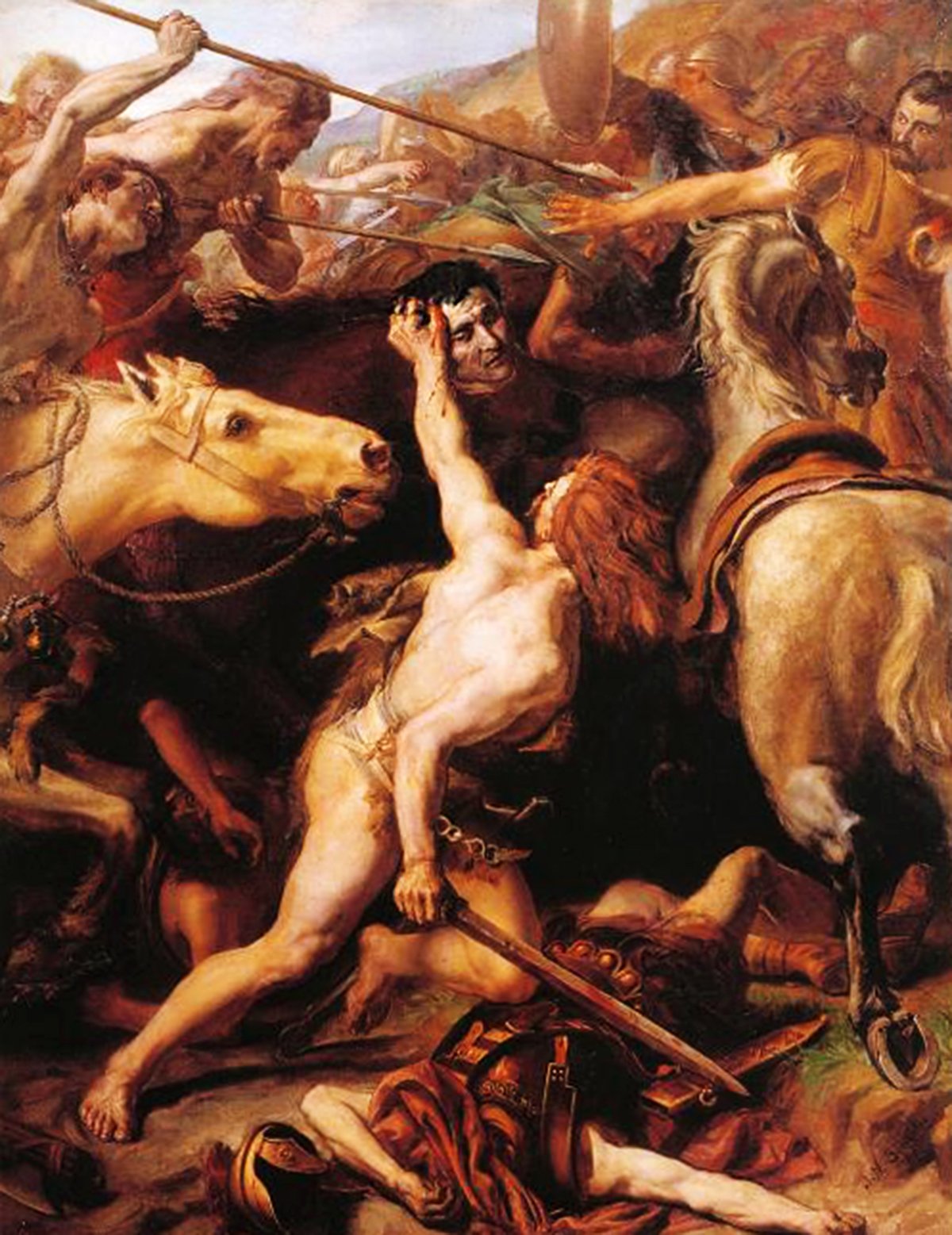
That day came in the late summer of 217 at the Battle of Geronium. Hannibal had yet again outsmarted the Romans and won the day, however, not as decisively as before. Roman general Marcus Minucius Rufus and his army were saved from Carthaginian encirclement by consul Quintus Fabius Maximus Verrucosus. Fabius was elected dictator for the year 217 BC, a rarely used magistracy invoked only in crisis.
Fabius admired Hannibal’s tactical brilliance and, therefore, opted not to confront him head-on in a decisive battle. Instead, he maintained his forces in close proximity to Hannibal’s army, with the objective of wearing him down through an extended war of attrition. Fabius successfully disrupted Carthaginian foraging expeditions, thereby constraining Hannibal’s capacity to cause devastation, all the while preserving his own military strength. He also employed a strategy of “scorched earth” to deny Hannibal’s troops access to essential resources like grain and other supplies.
Although such an approach is to this day regarded as the “Fabian strategy” in military doctrine, it did not sit well with most Romans at the time. Having Hannibal in Italy was, understandably, a major source of concern. Hannibal himself engaged in psychological warfare, straining the already strained nerves of the Roman public and the elite. He would harass Roman estates throughout Italy but avoided those belonging to Fabius, casting a shadow of doubt on whether the dictator’s unwillingness to engage might be due to collusion between the two.
After Fabius relinquished his dictatorship, two consuls were elected for the year 216 BC: Gaius Lucius Aemilius Paullus and Terentius Varro, a plebeian and a populist who promised a quick solution to the Hannibal problem. What Varro had proposed was for Rome to assemble 80,000 men, an unprecedentedly large army for the time, and simply crush Hannibal in a pitched battle. This battle was to take place at Cannae, situated approximately 40 kilometers (~25 miles) southwest of the city of Canusium (modern Canosa di Puglia), approximately 220 kilometers (~137 miles) southeast of Rome.
As a result of the war, the city of Cannae was abandoned, so Hannibal used it as his base camp for ravaging the fertile region of Apulia. At this point, his continually victorious army did not lack supplies, while weapons and armor were stripped from the vanquished Romans. Hannibal and his brothers only had to wait for the Romans to arrive and provide them with the battle they were well prepared for, despite being outnumbered almost two to one.
Both Roman consuls were heading the army, which caused a bit of a problem. The two leaders were not in agreement, so they decided for one of them to have the supreme command every other day. Paullus argued that Rome should avoid fighting Hannibal in the open fields in front of Cannae, since that terrain favored his more numerous and more skilled cavalry. His proposition was to move the camp to the west, where broken terrain would allow the Romans to use their superior infantry numbers and tactics. Varro, on the other hand, openly called this approach cowardly. Therefore, it should come as no surprise that the battle took place on Varro’s day of command.
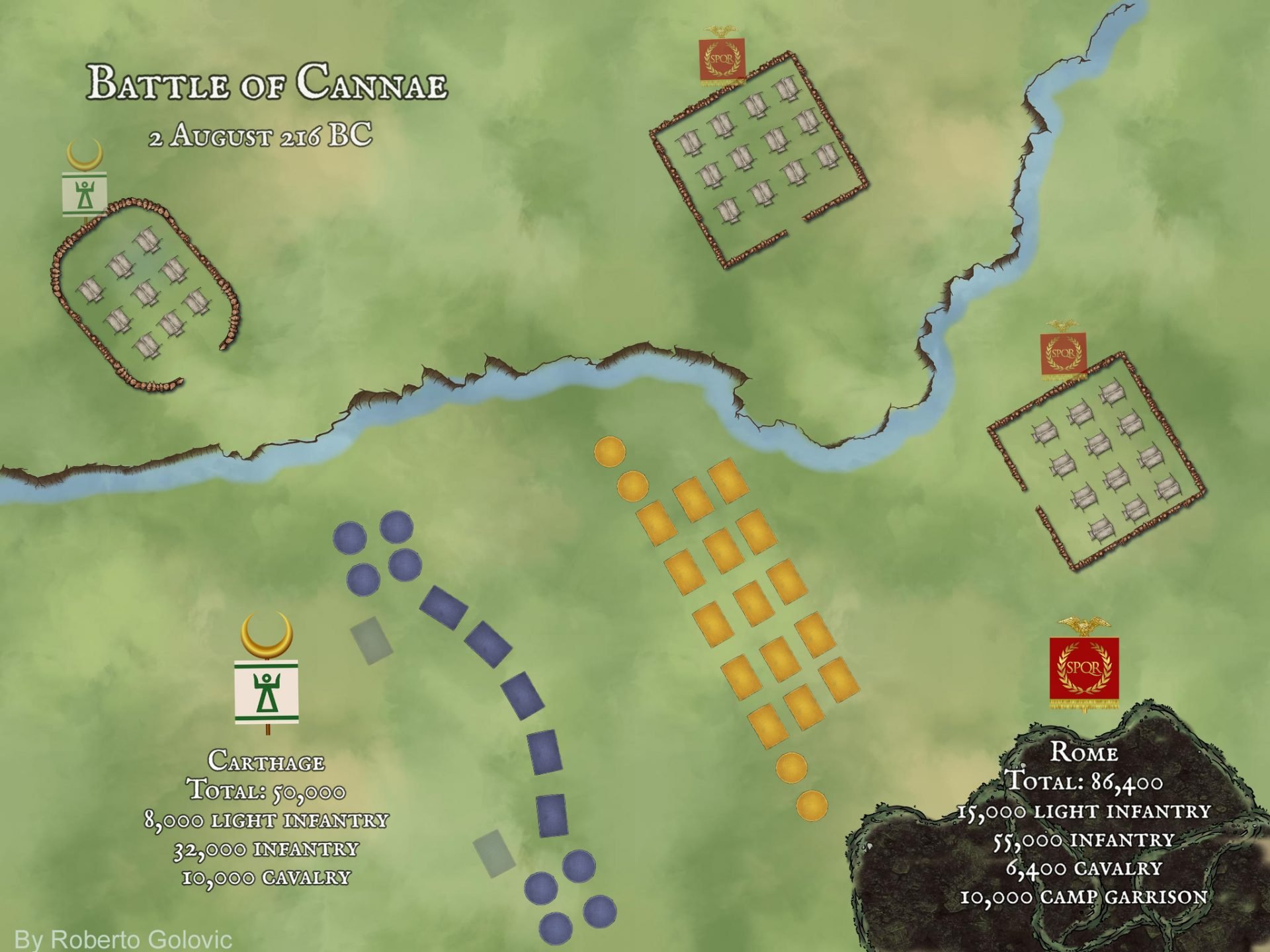
Unlike its imperial successor, the Roman legion during the mid-Republic did not have uniform centuries. Instead, it was composed of maniples, each numbering 100-120 men. Unlike the phalanx, maniples had three distinct lines instead of one. The first line consisted of the youngest soldiers, the hastati (spear-bearers); the middle line consisted of experienced soldiers, the principes (main-liners); and the last line of defense was made up of triarii (third-rankers), who were veteran soldiers over 40 years of age. At this time, only the triarii bore a holding spear, while the first two ranks were armed with the pilum (throwing javelin) and gladius (short sword).
In addition to heavy infantry, legions also had velites, light infantry skirmishers composed of citizens who did not have the means to afford a full set of equipment. They usually only saw action at the beginning of engagements, harassing enemy troops from afar. Cavalry units (equites) were also present but were mostly used for pursuing fleeing enemies and battlefield reconnaissance. Allied troops from the rest of Italy performed many of the same duties as Roman citizen soldiers and composed roughly half of the army at Cannae.
With hills to the left and river on the right, Varro assembled his troops on the narrow field two kilometres wide (~1.25 miles). Having such a large army, he brought maniples closer together than usual. This could have been in order to fit as many troops as possible into the front line, but also to prevent more numerous Carthaginian cavalry from penetrating his main line. In this way he had stripped the maniple from the main advantage it had over more cumbersome phalanx – maneuverability. Simultaneously, 6,400 cavalry was equally split on both sides of the unusually dense Roman army.
On the other side of the field, Hannibal did something unusual. He formed a crescent out of his army, with the middle closest to the Roman battle line and the sides further away. In the middle of this semi-circular battle line, Hannibal placed his least reliable troops, mostly composed of Gauls and Iberians. However, he himself, together with his brother Mago, stood with these troops to motivate them and show that they were not expendable (at least not any more than he was). His strongest infantry, mainly composed of Libyans and other African troops, positioned on the sides. In addition, two concealed units were kept behind the main battle line as reserves. On the flanks, he deployed Numidian cavalry on one side and heavy Iberian and Gallic cavalry on the other, totaling 10,000 horsemen.
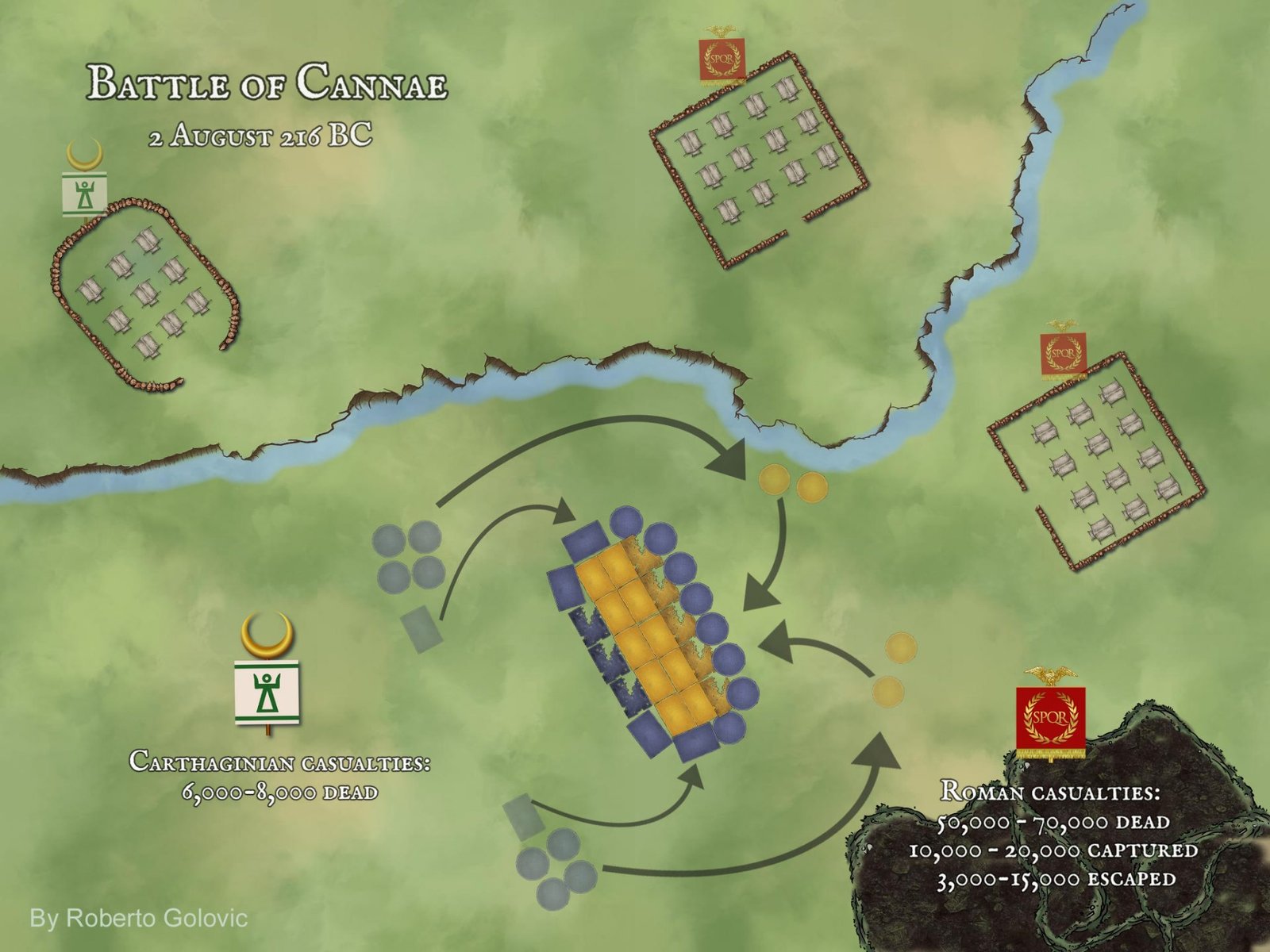
The battle began with skirmishers from both sides harassing each other. The Romans deployed Velites, while the Carthaginians mostly used slingers. Meanwhile, Hannibal’s superior cavalry launched an attack on its Roman counterpart, aiming to drive them off the field. Hasdrubal (not Hannibal’s brother, although sharing the same name) led the Iberian cavalry and succeeded in this attempt. He then rode across the battlefield to assist the Numidian cavalry.
While this was taking place the heavy infantry had already engaged. The superior Roman troops had much success against the Carthaginian center, steadily pushing them backward. However, African troops on the sides stood their ground. In other words, the crescent formation was now inverted, precisely as Hannibal had planned. What followed was something military strategists like Carl von Clausewitz claimed one should never attempt—encirclement of a numerically superior enemy. Even enveloped by the semicircle of Carthaginian troops, the Romans were holding their own. However, it was when the Carthaginian cavalry struck from the rear that things started to go downhill.
Now completely enveloped, Roman troops were packed so closely that those in the middle could not even raise their arms. The center of the Carthaginian line almost broke, but Hannibal managed to rally his troops and reinforce them with reserves that had been hidden until then. While the cavalry was slowly carving its way through the rear of the Roman army, panic began to set in. The fact that most Carthaginian troops were armed with confiscated Roman armor started to play mind tricks upon Romans who, seeing their fellow Romans, started to think that Carthaginian troops were even closer than they were. In the meat grinder they found themselves in, tens of thousands of Romans could only wait for their turn while listening to their relatives, friends and comrades being slaughtered, for hours. Modern estimates are that there were 100 deaths per minute.
Even in the face of such certain and crushing defeat, there were those who showed bravery. The Roman cavalry, the only portion of the army that could actually escape the carnage, decided to dismount and fight. Paullus, the Roman consul who had advised against fighting at Cannae, was hit by a rock in the opening stages of the engagement and was bleeding profusely when a military tribune fleeing the battlefield on horseback found him sitting on a rock. Livy brings us this exchange between the two men:
“Lucius” he cried, “on whom the gods ought to look down in mercy, as the only man without guilt in this day’s disaster, take this horse, while you have still a little strength remaining and I can attend you and raise you up and guard you. Make not this battle calamitous by a consul’s death; even without that there are tears and grief enough.” To this the consul answered, “All honour, Cornelius, to your manhood! But waste not in unavailing pity the little time you have to escape the enemy. Go, and tell the senators in public session to fortify the City of Rome and garrison it strongly before the victorious enemy draws near: in private say to Quintus Fabius that Lucius Aemilius has lived till this hour and now dies remembering his precepts. As for me, let me breathe my last in the midst of my slaughtered soldiers, lest either for a second time I be brought to trial after being consul, or else stand forth the accuser of my colleague, blaming another in defence of my own.” The two men were still speaking when a crowd of fugitives swept by. The Numidians were close on their heels. Paullus fell under a shower of spears, his killers not even knowing whom they killed.
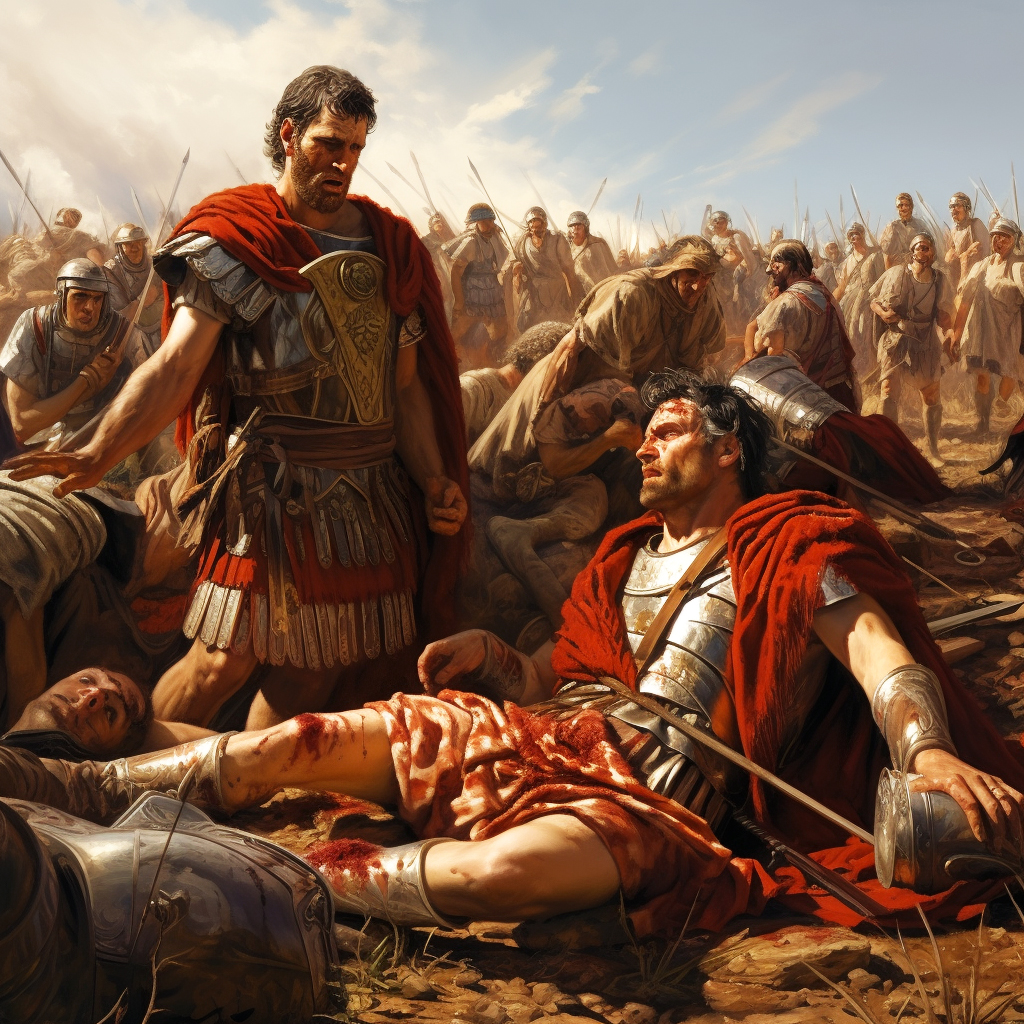
Towards the end of the day, only 3,000 of the men who had fought had escaped the slaughter. Additionally, we can add some 10,000 allied troops who were still garrisoning the camp. In total, about 13,000 out of 80,000 Roman soldiers had survived the engagement at Cannae. The largest army the Roman Republic had ever assembled in its centuries of existence ended up enacting Rome’s bloodiest defeat. In addition to the current consul who died, the Republic lost both consuls from the previous year, including former consul Marcus Minucius Rufus, who escaped death at the Battle of Geronium, as well as 29 military tribunes, 80 senators, 300 equestrians, and many other brave Romans of lesser status.
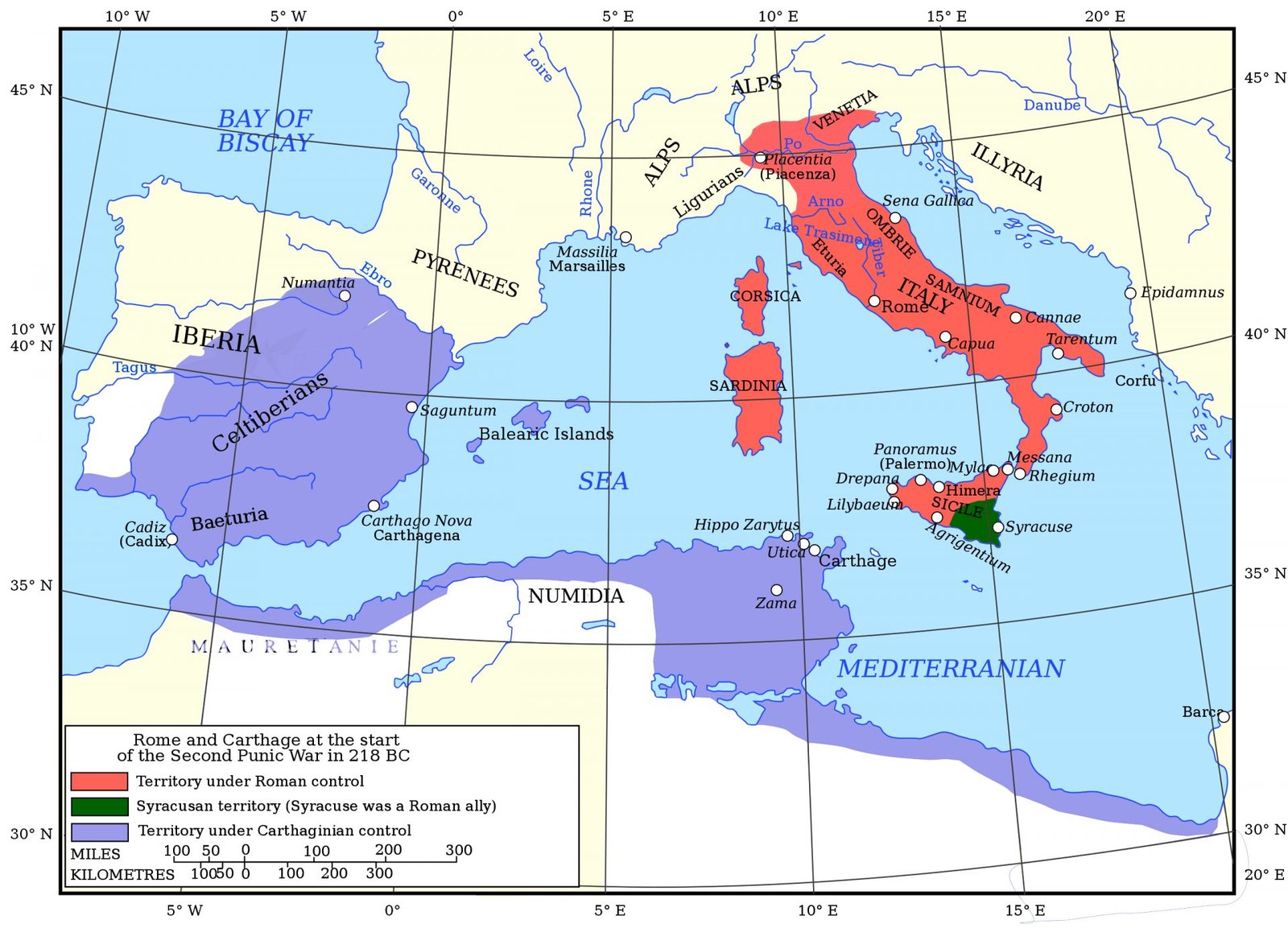
Despite their superior performance, the Carthaginian army did not escape unscathed, with casualties numbering between 6,000 and 8,000 dead, and countless wounded soldiers. What remains the subject of most debate, however, is Hannibal’s next move. Many expected and advised Hannibal to march directly on Rome. Due to a lack of siege engines, fresh reinforcements, or the realization that a protracted siege would harm him more than Rome, Hannibal never chose this course of action. He was convinced that such a decisive victory as Cannae would turn Roman allies to his side. However, this only happened sporadically, so he never fully capitalized on his monumental victory. Nonetheless, the strategic genius, tactical execution, and bravery displayed at the Battle of Cannae set Hannibal apart from all of Rome’s other enemies and placed him among the most illustrious generals that ever lived.
The Second Punic War continued for approximately 15 more years after Cannae. During this time, despite his achievements, political factions within Carthage, including the pro-peace faction led by Hanno the Great, began to oppose Hannibal. In Rome, a veteran who had faced Hannibal in many battles rose to prominence – Scipio Africanus. It was under his leadership that the war was brought to its conclusion in 201 BC when Rome, due to its unparalleled resilience, achieved a decisive victory over Carthage.
